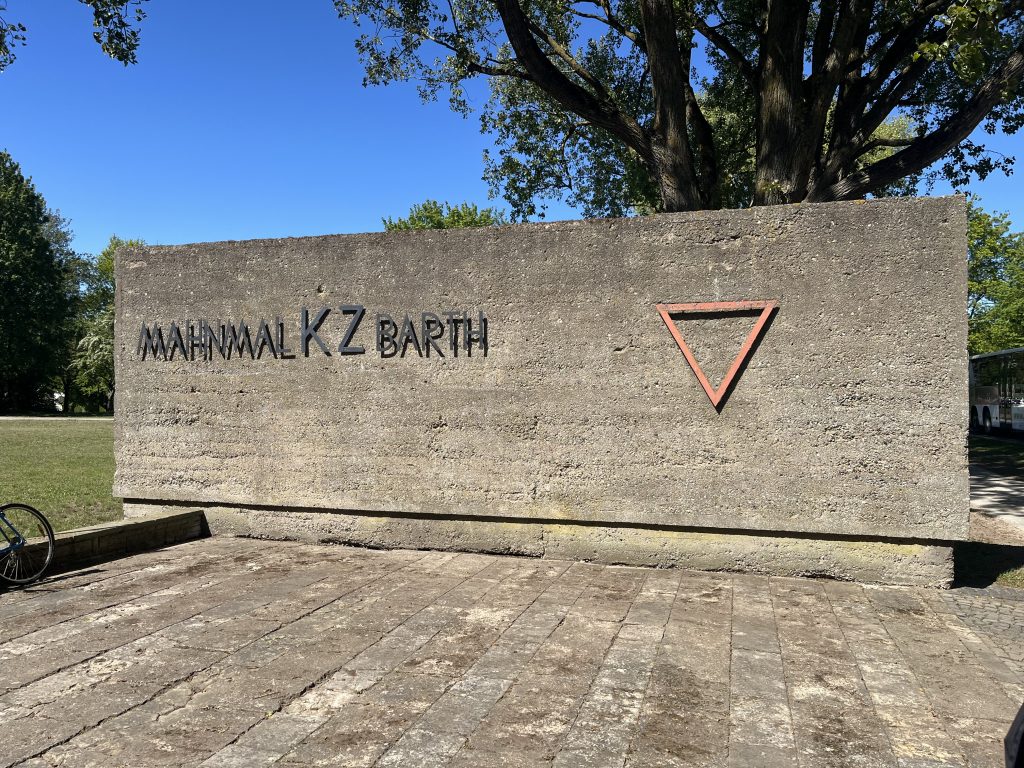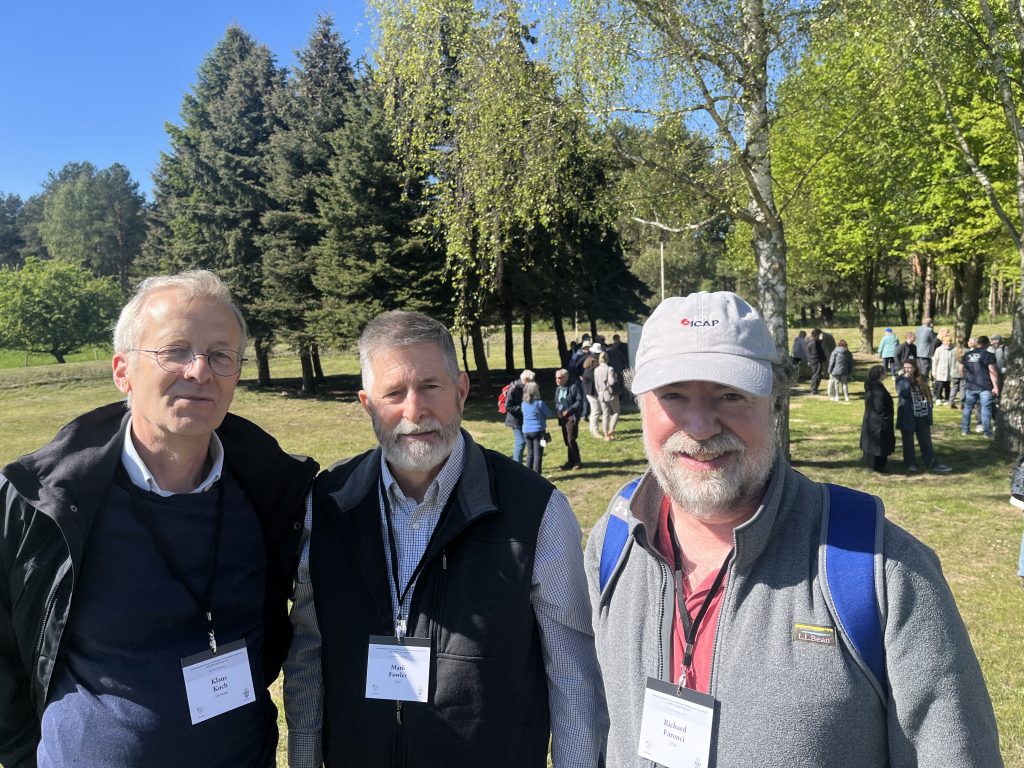Liberation and Rebirth in Barth
I recently returned from a conference in Barth, Germany organized by local volunteer historians to commemorate 80 years of liberation from Nazi rule. The conference lasted three days including a full day of presentations by descendants of prisoners and others, as well as trips to memorials and other excursions.
Barth, a picturesque vacation town on the coast of the Baltic Sea was home to a concentration camp for Jewish and political prisoners and also a stalag for allied POWs mostly airmen. The camp provided slave labor for the Heinkel airplane factory which produced the He 162 Volksjäger, a jet fighter designed for easy and rapid production using unskilled labor and cheap materials.
My mother, her sister and her cousins (young women ages 14 – 21) worked in the factory drilling holes in airplane wings from December 1944 through May 1945. When the Allies started bombing the facilities, Heinkel moved production to the forest at night under tents. While Barth was not an extermination camp, many Jewish inmates starved or froze to death and it is not clear how many more months they could have survived had the war continued.
Before leaving for the trip I arranged with the conference for an excursion to Ribnitz (about 20 miles from Barth) where my mother and her sister were marched to by the SS and ultimately liberated by the Russian army on May 1, 1945. The conference provided a private car, driver and translator both of whom were volunteer researchers with the documentation center (retired teachers) and very knowledgeable about the history. The translator read from a document which sounded just like my mother’s description of this chapter of her odyssey.
We followed a route to Ribnitz from a map labeled “Todesmarsch” (death march) in a German book. There were 2 possible routes, so we went 1 way going and the other on the way back. Both routes were very green with forests on either side where they likely marched. The drive was a revelation, but unfortunately we did not have time for me to stop and walk in their steps at any point.
Later on, as we were visiting memorials I had a random encounter with two other descendants and after asking a few questions of each other we took a photo. The picture was of myself, the son of a stalag POW and the grandson of a German stalag guard. It kind of said it all to me. I spoke with the descendant of the guard and his mother who were present for most of the conference. The mother presented the documentation center with a diary from her father the guard that apparently contained some key information about the fate of a large number of Russian inmates among other details.
Prior to this trip, I would have told anyone that, unlike the Jefferson Airplane song, I do not believe in miracles. However, if one would have travelled back in time to be with those young women at any point between May of 1944 and May of 1945 and were told that 80 years on would not be the end of their lines, one might reconsider.
Am Yisrael Chai


